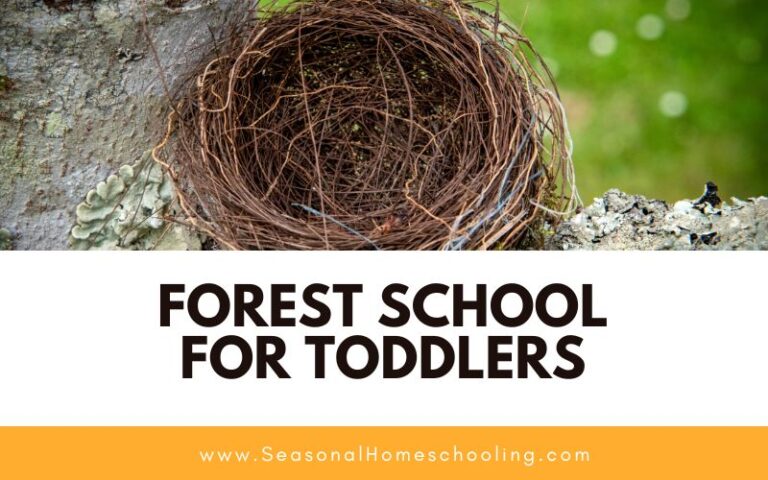Forest School Lesson Planning
Forest school is a type of outdoor education that focuses on allowing children to explore and learn about nature through play and hands-on activities. It is a great way to incorporate nature-based learning into homeschooling and can help children develop a deeper appreciation and understanding of the natural world. Here is how you can create your own forest school lesson planning.

This post contains affiliate links, see my disclosure policy for more information.
Forest School Lesson Planning
In order to plan a successful forest school lesson, it is important to follow some key steps, including identifying learning objectives, choosing a theme, selecting activities, preparing materials, planning for safety, setting expectations, and reflecting on the experience.
By following these steps, homeschool parents can create engaging and educational forest school lessons that their children will love.
Identify your learning objectives: The first step in planning any lesson plan is to identify what you want your child to learn. Make a list of the knowledge, skills, and attitudes you want them to develop during the lesson.
Choose a theme: Once you have your objectives, you can choose a theme that will tie everything together. Themes could include the seasons, different types of animals or plants, or conservation and sustainability.
Select activities: Next, choose the activities you want to include in the lesson. These could include nature walks, scavenger hunts, storytelling, crafting, or anything else that fits with your theme and objectives.
Prepare materials: Make sure you have all the materials you need for the activities, such as art supplies, nature guides, or snacks. Pack a backpack with all the supplies you need for your outdoor lesson.
Plan for safety: Safety is always a priority when teaching outdoors. Make sure you have a first aid kit, sun protection, and plenty of water. You should also be aware of any hazards in the area, such as poisonous plants or wildlife.
Set expectations: Explain to your child what you expect of them during the lesson, such as staying with the group, listening to instructions, and respecting nature.
Reflect: After the lesson is over, take some time to reflect on what worked well and what you could improve for next time. This will help you create even better lesson plans in the future.
By following these steps, you can create a fun and educational forest school lesson plan for homeschooling that your child will love.







